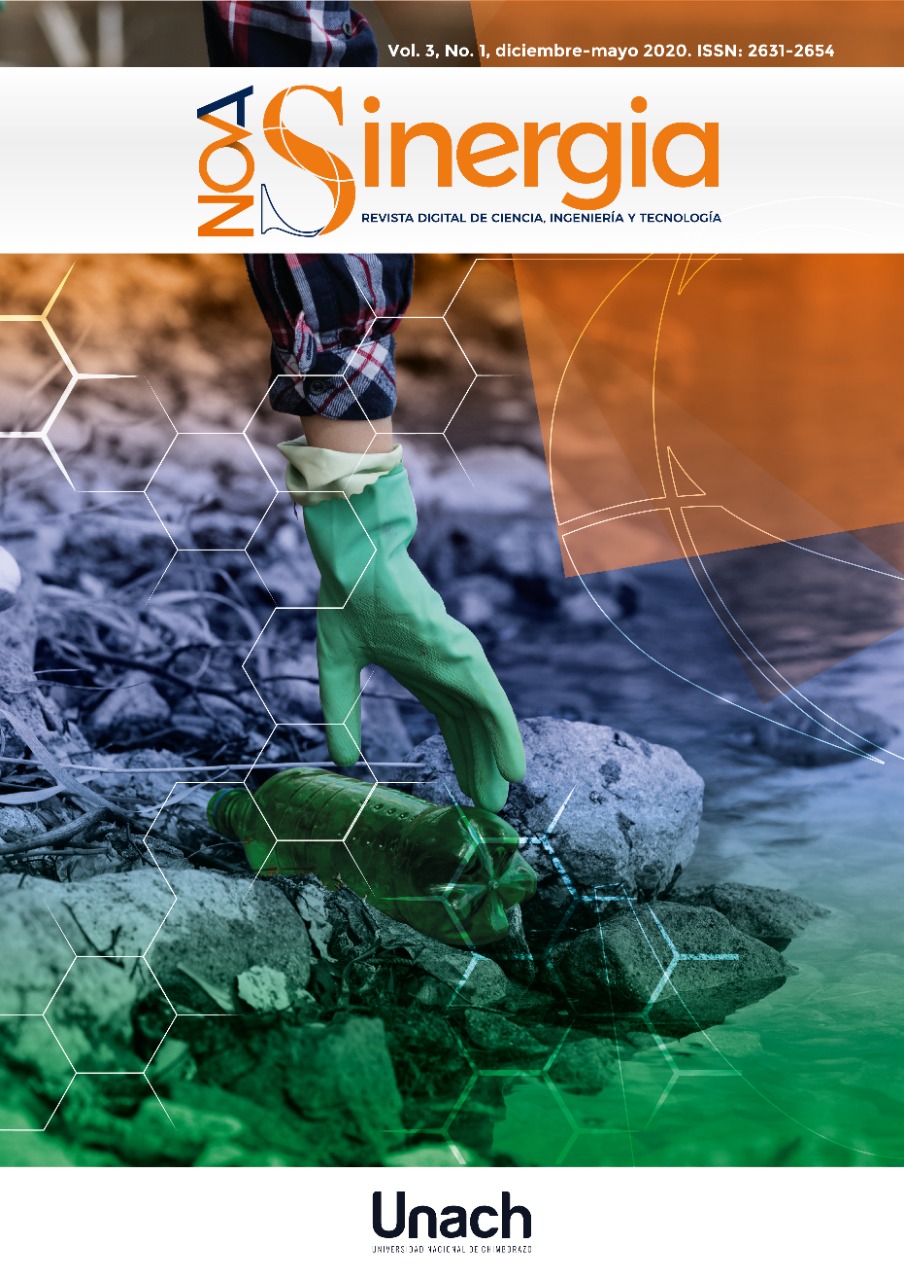Aporte de nutrientes por caída de hojarasca en plantaciones de Tectona grandis (Teca) en períodos de sequía
DOI:
https://doi.org/10.37135/ns.01.05.02Palabras clave:
Déficit hídrico, descomposición de la hoja, dinámica de caída de hojasResumen
El objetivo de este trabajo fue estudiar la dinámica de caída de hoja de Teca (Tectona grandis), su aporte de macronutrientes en época de sequía y su relación con el contenido de nutrientes de las hojas en los árboles que permanecen en diferentes momentos del período de sequía. Usando un diseño de bloques al azar con 4 repeticiones, se evaluó la textura de suelo, contenido de humedad del suelo en el periodo seco; caída de hojarasca y recolección de hojas frescas de árboles seleccionados para su posterior análisis de macroelementos. Los resultados muestran que para finales del período de sequía el contenido de agua en el suelo había bajado desde 40 % hasta 22 %. Esta disminución ocasionó la caída de más del 95 % de las hojas. Los aportes de nutrientes en orden decrecientes fueron: Ca>N>K>P>Mg y fueron de 88.4; 8.96; 46.7; 181.32; 6.46 kg/ha de N, P, K, Ca y Mg, respectivamente. En el período de siete meses de sequía la caída de hoja fue de 8 t/ha. N y P fueron los que se movilizaron desde las hojas a otras partes de la planta durante los primeros 5 meses del período seco, lo que demuestra una mayor eficiencia de utilización. En función de las recomendaciones de fertilización para Teca, el aporte de nutrientes a través de la hojarasca y los contenidos de los mismos en el suelo, se recomienda que sólo se deben realizar fertilizaciones con N y K en la zona en estudio.
Descargas
Referencias
Alvarado, A. (2009) Nutrición y fertilización de Tectona grandis Linn,f En: Nutrición y fertilización Forestal en regiones tropicales Alvarado A, Raigosa J, (eds,), Centro de investigaciones Agronómicas, Universidad de Costa Rica 419 p
Boley D., Drew, A., & Andrus R. (2009) Effects of active pasture, teak (Tectona grandis) and mixed native plantations on soil chemistry in Costa Rica. Forest Ecology and Management 257: 2254–2261
Creutzig, F., Roy, J., Lamb, WF & et al. (17 autores más) (2018) Towards demand-side solutions for mitigating climate change, Nature Climate Change, 8 (4): 268-271.
De Deus Rosa, T.; Lacerda Matos Pereira S. W.; & Gonçalves da Silva, R. (2015) concentração e acúmulo de nutrientes em povoamentos de Teca no estado de mato grosso, Brasil CERNE, 21 (1): 51-57
Engelbrecht, B., M., J. (2001), Drought resistane in seedlings of 28 tropical woody plant species. Euro-Workshop: Functional Groupings of Tropical Trees. Netherlands
Fernández-Moya, J., Murillo, Portuguez, E., Fallas, J., Ríos, V., Kottman, F., Verjans, J., Mata, R., & Alvarado, A. (2015). Nutrient accumulation and export in teak (Tectona grandis L.f.) plantations of Central America. iForest 8: 33-44
Garau, A., M., Ghersa, C., M., Lemcoff, J., H. & Barañao J., J. (2009), Weeds in Eucalyptus globulus subsp, maidenii (F, Muell) establishment: Effects of competition on sapling growth and survivorship, New Forests 37: 251-264
Hasselquist, N., J., Allen, M., F., & Santiago J. (2010), Water relations of evergreen and drought-deciduous trees along a seasonally dry tropical forest chronosequence L., S., Oecologia 164: 881, https://doi,org/10,1007/s00442-010-1725
Henríquez, C., Bertsch, F., & Salas, R. (1998) La fertilidad de suelos: Manual de laboratorio, San José, CR: Asociación Costarricense de la Ciencia del Suelo, 64 p,
Jaimez R., & Franco W. (1999) Producción de hojarasaca, aporte de nutrientes y descomposición en sistemas agroforestales de cacao frutales AGROTROPICA 11 (1):1-8.
Johnson D., & Turner J. (2019) Tamm Review: Nutrient cycling in forests: A historical look and newer developments, Forest Ecology and Management 444 : 344-373
Klein, V. (2008) Física do Solo, Paso Fundo, Brasil, Editora Universitaria, 212p
Kollert, W. & Cherubini, L. (2012). Teak resources and market assessment 2010. FAO Planted Forests and Trees Working Paper FP/47/E, Rome
Lugo, A., Abelleira Martínez, O., Medina, E., Aymard, G. & Heartsill, T. (2020). Novelty in the tropical forests
of the 21st century. Advances in Ecological Research, 62 https://doi.org/10.1016/bs.aecr.2020.01.008
Mollinedo Garcia M., Herrera, M., & Munoz, F. (2016), Caracterización del crecimiento de plantaciones jóvenes de Teca (Tectona grandis Linn f,) y estimación de curvas de índice de sitio en el área septentrional de la República de Guatemala, Madera bosques vol, 22 (2): 89103, http://dx,doi,org/10,21829/myb,2016,2221327,
Murphy, P., G., & Lugo, A., E. (1986), Ecology of tropical dry forest, Annual Review, Ecology Systematic, 17, 67-88.
Ojo, T., O., Kadebab, S., & Kayodec, J. (2010), Litter Mass and Nutrient Dynamics in a Transformed Rainforest Ecosystem in Southwestern Nigeria, Bangladesh, Journal Science, India, Research, 45(4), 351-358.
Oosterveld, M. & Chang, C. (1980) Empirical relations between laboratory determinations of soil texture and moisture retention. Canadian Agricultural Engineering 22: 149-151
Prescott, C. E., Zabek, L. M., Staley C., L. & Kabzems R. (2002), Decomposition of broadleaf and needle litter in forests of British Columbia: influences of litter type, forest type and litter mixtures, Canadian, Journal, Forest, Research, 30:1742–1750,
Ramachandra, H. & Proctor J. (2007) Fine litterfall and its nutrients in plantations of acacia auricuufobmis, eucalyptus tereticornis and tectona grandis in the chikmagalur district of the western ghats, india, Journal of Tropical Forest Science 10 (1) 73-85
Raigosa, A. Y. 2009. Nutrición y Fertilización Forestal en Regiones Tropicales. San Jose, Costa Rica: centro de investigaciones de costa rica.
Sánchez, C., Lama, D., & Suatunce P. (2007), Hojas caídas y aporte de nutrientes de 10 especies forestales tropicales, Revista Ciencia y Tecnología 1: 73-78,
Sánchez-Salguero, R., N. (2012), Vulnerabilidad frente a la sequía de repoblaciones de dos especies de pinos en su límite meridional en Europa, ECOSISTEMAS, Doi: 10,7818/ECOS,2012,21-3,05,
Sankaran V. (1993). Decomposition of leaf litter of albizia (Paraserianthes falcataria), eucalypt (Eucalyptus tereticornis) and teak (Tectona grandis) in Kerala, India. Forest Ecology and Management 56: 225-242
Thaiutsa, B., & Granger O. (2015), “Climate and the Decomposition rate of–Tropical Forest Litter,” Food and Agriculture Organization of the United Nations (FAO), Consultado en julio, http://www,fao,org/docrep/n6845e/n6845e05,htm
Tyree M. T., Vargas G., Engelbrecht B. M. J., & Kursar T. A. (2002), Drought until death do us part: a case study of the desiccation-tolerance of a tropical moist forest seedling-tree, Licania platypus (Hemsl,) Fritsch, Journal of Experimental Botany 53: 2239–2247
Tyree, M., T., Engelbrecht, B., M., Vargas, G., & T, A., Kursar, (2003), Desiccation tolerance of five tropical seedlings in Panama: Relationship to a field assessment of drought performance, Plant Physiology, 132: 1439-1447






